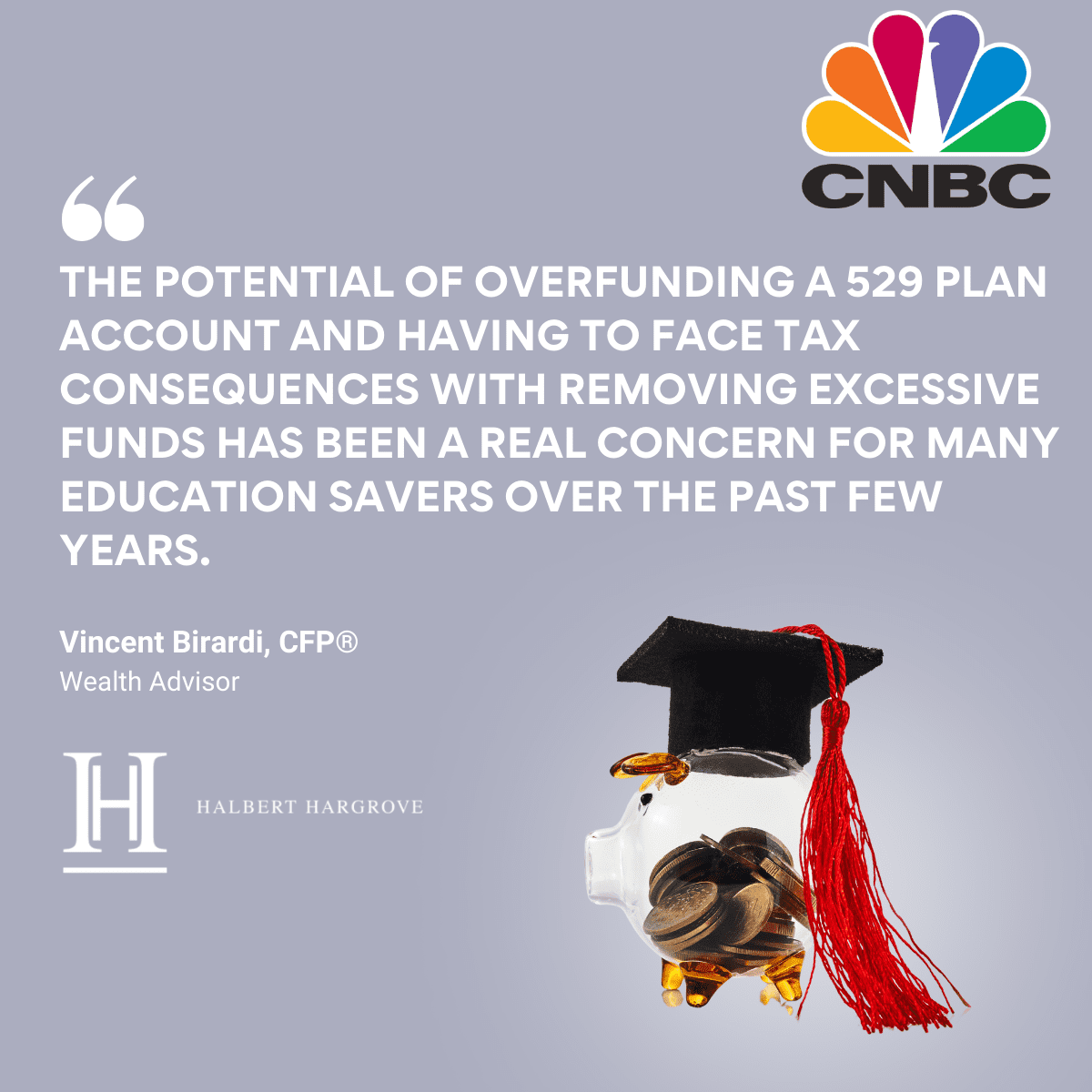By Jessica Dickler in CNBC, featuring Vincent Birardi, CFP®, AIF®, Wealth Advisor
This year, a big change happened to 529 college savings plans.
As of 2024, families can roll over unused 529 funds to the account beneficiary’s Roth individual retirement account, without triggering income taxes or penalties, as long as the 529 plan has been open for at least 15 years.
Some families have already taken advantage of the new benefit. In the first half of 2024, $100 million in assets from 15,000 529 plans were transferred to Roth IRA accounts, according to ISS Market Intelligence.
Most experts expected that this new benefit would help increase interest in 529s. Few anticipated such an immediate boost.
Flexibility ‘motivates’ 529 funding
The added flexibility is having a significant impact on savers: 23% of parents said the ability to roll over funds into a Roth IRA was one of the key factors that most influenced their decision to open a 529 plan, according to a recent report by Saving For College, a Miami-based company focused on making 529 plans more accessible.
Among the roughly 12% of respondents who don’t yet have a 529 plan, 76% say this benefit makes them more likely to open an account, the report found.
Further, 57% of families with an account are also more likely to boost their 529 plan contributions due to the 529-to-Roth rollover benefit that went into effect in January. The survey polled more than 1,100 adults through Saving For College’s site and newsletter, so respondents were likely more aware of the advantages of 529 plans.
“Knowing there’s a little more flexibility does help motivate clients to fund a 529,” said David Nienaber, a financial planner and shareholder at Foster & Motley Wealth Management. The firm ranked No. 34 on the 2024 CNBC Financial Advisor 100 list
529-to-Roth rollovers are ‘icing on the cake’
Previously, tax-advantaged 529 plan withdrawals were limited to qualified education expenses, such as tuition, fees, books, and room and board. The restrictions loosened in recent years to include continuing education classes, apprenticeship programs and student loan payments.
But with the 529-to-Roth rollovers, these plans offer much more flexibility, even for those who never go to college, which Nienaber called “the icing on the cake.”
One point of resistance to 529s had been if a child doesn’t end up needing some, or any, of that savings for education, other experts also say.
“The potential of overfunding a 529 plan account and having to face tax consequences with removing excessive funds has been a real concern for many education savers over the past few years,” said Vincent Birardi, a wealth advisor at Halbert Hargrove Global Advisors in Long Beach, California, which ranked No. 54 on CNBC’s FA 100.
“Of the new benefits, this is the one we’ve seen the most excitement around,” said Martha Kortiak Mert, chief operating officer at Saving For College.
“The problem this solves is the barrier to entry,” she said. “This opens up possibilities, new opportunities of what they can do with this kind of account.”
There are still some limitations.
The 529 account must have been open for 15 years and accountholders can’t roll over contributions made in the last five years. Rollovers are subject to the annual Roth IRA contribution limit, and there’s a $35,000 lifetime cap on 529-to-Roth transfers.
Total investments in 529s hit $508 billion
Financial experts and plan investors agree that 529 plans are a smart choice for many. And yet, in previous years, data shows that regular contributions to a 529 college savings plan often took a back seat to paying more pressing bills or other priorities.
At the same time, sky-high costs and concerns over ballooning student loan balances have weighed heavily on considerations about college for students and their parents.
But this year, in part because of the new changes, more parents are utilizing a 529 college savings plan, with most making recurring monthly and quarterly contributions.
In 2024, total investments in 529s jumped to $508 billion in June, up nearly 13% from $450.5 billion the year before, according to data from the College Savings Plans Network, a network of state-administered college savings programs.


